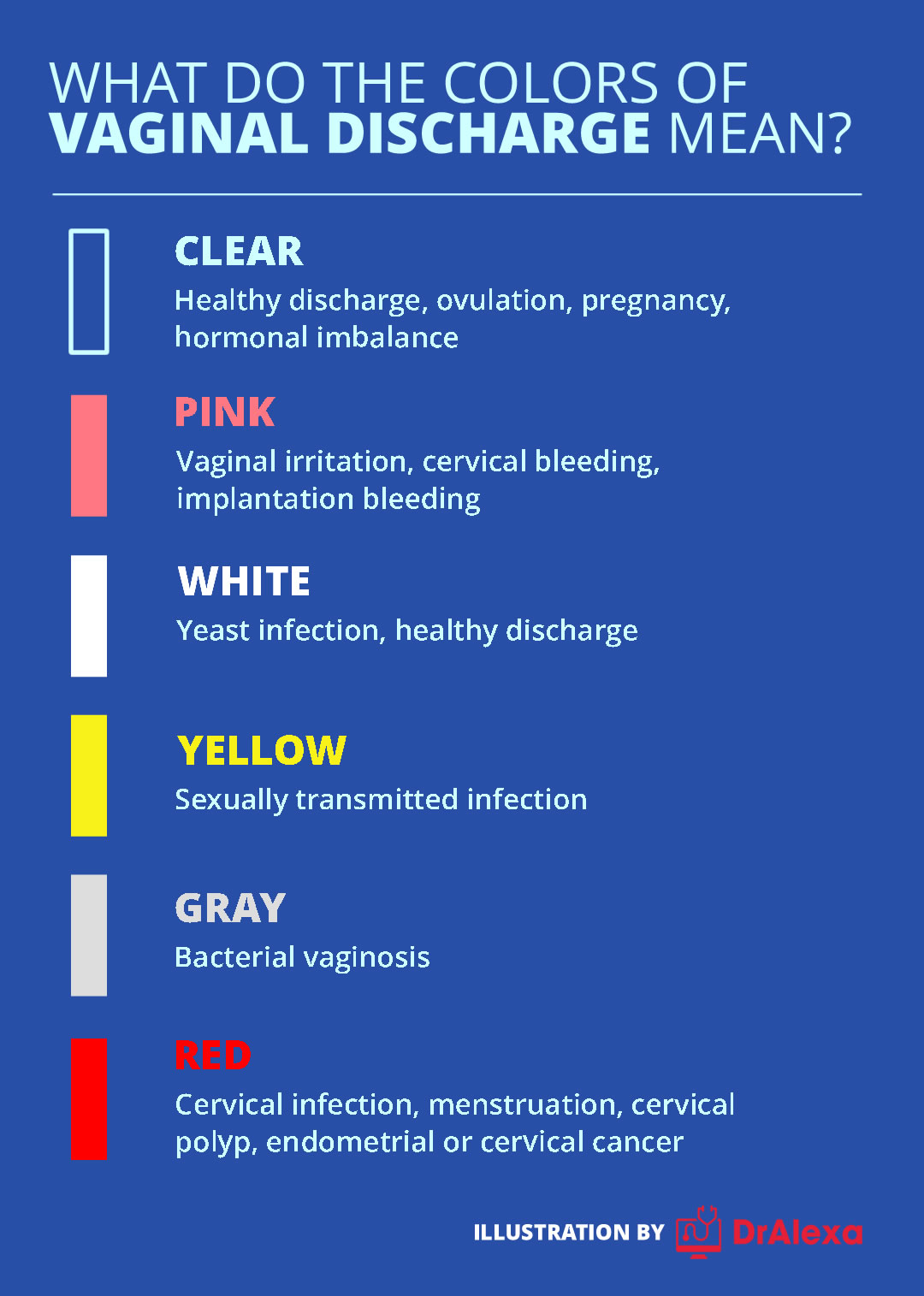Genital discharges are pretty common occurrences in women and men. Women can have vaginal discharge while men have penile discharge. This is not necessarily something to be worried about when it occurs, as the genital discharge is normal and expected.
Female discharge assists in keeping the vagina free of harmful pathogens and clean. The color of normal discharge is usually translucent white or clear. Still, sometimes this can change depending on the condition of the body. For instance, some women may experience chlamydia discharge color, which can be yellowish and smelly, when they get the infection.
For instance, some women may experience chlamydia discharge color, which can be yellowish and smelly, when they get the infection.
Penile discharge typically occurs in the form of pre-ejaculate fluid when there is arousal from sexual activity. This discharge is secreted from the glands on the inner part of the foreskin and the tip of the penis.
Similar to vaginal discharge, penile discharge is usually clear in color. However, a change in the color, smell, amount, or consistency of penile discharge can indicate an underlying STI.
Many STDs, including chlamydia (caused by chlamydia trachomatis), can adversely affect the good and helpful bacteria in the vaginal microflora, thus changing the standard conditions of the discharge.
STD discharge color chart and chlamydia discharge color
Sometimes, you can determine what type of infection you’ve contracted by paying attention to the changes in your genital discharge patterns. A change in the color of your genital discharge may mean you have a yeast infection, bacterial vaginosis, or other conditions.
A yellow or green discharge may indicate you have an STD. View the color chart below:

Types of abnormal discharge
A woman’s vaginal can be pretty sensitive to changes. Changes in the balance of good bacteria in the vagina can change the discharge’s color, smell, or texture.
For instance, a woman can experience a green vaginal discharge or an unusual brown discharge.
Below are a few conditions that can cause abnormal vaginal discharge;
- Using antibiotics or steroids
- Bacterial vaginosis (a common bacterial infection in pregnant women or women with multiple sexual partners)
- Birth control pills
- Sexually transmitted infections like gonorrhea
- Yeast infections
- Cervical cancer
- Diabetes
- Feminine products like scented soaps, douches, or bubble baths
- Pelvic inflammatory disease (PID)
- Trichomoniasis
What is chlamydia discharge color?
Oftentimes, chlamydia may cause symptoms that look like a urinary tract infection or cervicitis. Most times, an infected person’s vaginal or penile discharge may be yellow in color. They can sometimes have a foul-smelling odor. Chlamydia discharge color can also be gray or whitish. This symptom is usually followed by pain and a burning sensation in the genital area during urination.
Frequently Asked Questions
The vaginal or penile discharge of someone with chlamydia usually has a sharp foul smell. This smell is sometimes described as fishy or likened to how pus smells.
Unusual discharge from the penis or vagina is a common sign of chlamydia in women and men. While the chlamydia discharge color is usually yellowish in nature, the consistency of the thickness can vary depending on the gender.
For example, men can experience penile discharge that is clear and thin; they can also sometimes have thick mucus-like discharge.
Women can experience frothy green or yellow discharge.
Vaginal discharge is pretty standard and good for the health of the vagina. This is because the discharge helps to clean the vagina of harmful bacteria.
However, if you’re experiencing unusual discharge, you should inform your healthcare provider.
You can also employ the following measures to deal with constant vaginal discharge.
- Don’t use feminine products or scented soaps to wash your vaginal.
- Avoid douching
- Avoid using feminine sprays and bubble baths on your vagina
- Wash your vagina regularly with mild, gentle soap and warm water. Do not apply soap inside your vagina.
- When you use the restroom, wipe your vagina from front to back to prevent bacteria from getting inside and causing an infection.
- Make a habit of wearing 100% cotton underwear, and avoid clothes that are too tight.
You should get checked for chlamydia at least once a year. However, if you have anonymous or multiple sex partners, you should get tested as frequently as every 3-6 months.
Yellow semen does not necessarily indicate that you’re sick or anything is wrong with you. You can discharge yellow semen for many reasons, some of which are not related to ill health or an existing medical condition.
For instance, you can have yellow semen due to aging, the presence of urine, or when you’ve not ejaculated for a reasonably long time.
Conversely, yellow semen can also indicate existing conditions requiring medical attention. This is because sexually transmitted diseases, infections, and UTIs can make your semen yellow.
Therefore, you should visit your healthcare specialist to know why your semen is yellow or if you feel pain or fever when you ejaculate or urinate.
Semen is characteristically white, light gray, or cream in color, but sometimes the color can change to a different hue. Most times, when this color changes, there’s no cause for concern.
However, yellow semen can also be an indicator of some health problems. For instance, if you have yellow semen with other related chlamydia symptoms, it’s best to reach out to your doctor to be sure.
You don’t need to be worried if your discharge is watery because it can be an indication of a healthy vagina.
The vagina typically cleans itself by producing discharge. Additionally, the vagina has more discharge around the ovulation period.
However, a change in the thickness and color of your discharge accompanied by symptoms like soreness or itching in the vagina may indicate a medical condition.
Your discharge can become watery when natural hormonal fluctuations happen during ovulation, pregnancy, sexual arousal, and menopause.
For instance, when ovulation occurs in the menstrual cycle, your discharge may look like egg whites and be clear, stretchy, and slippery.
This is because the body makes about 30 times more mucus in the build-up to ovulation than it does after ovulation.
Suppose you test negative for STDs and notice that you have a penile discharge. In that case, you don’t need to worry, as STDs are not the only possible reason for penile discharge.
Your penis produces discharge for different reasons. For instance, you can have discharge as pre-ejaculation when sexually aroused.
You may also notice a discharge from your penis if you have a UTI or balanitis.
However, you must speak to your healthcare specialist if your discharge is due to an STD for the sake of your sexual health.





